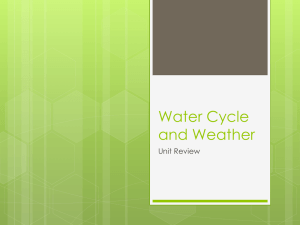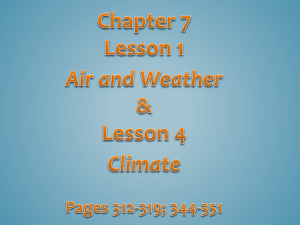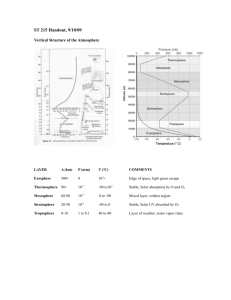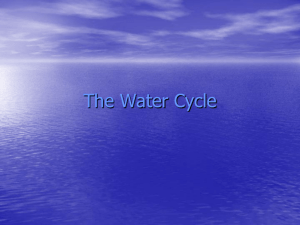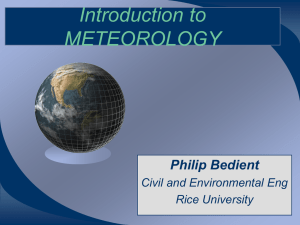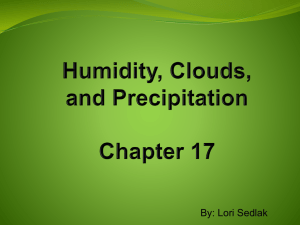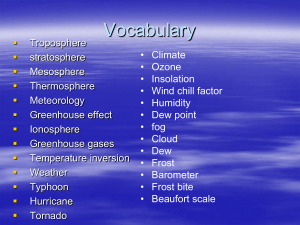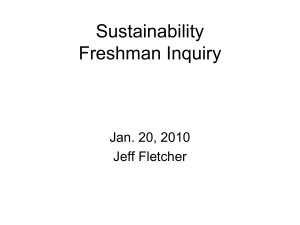Chapter 6 Study Guide
advertisement
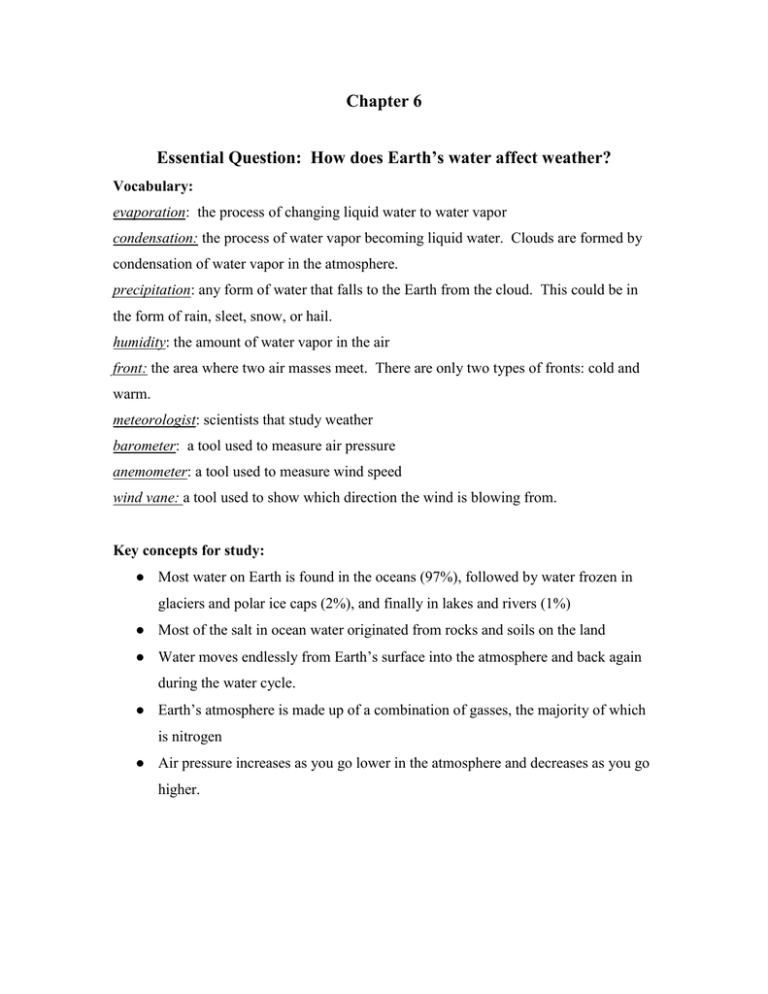
Chapter 6 Essential Question: How does Earth’s water affect weather? Vocabulary: evaporation: the process of changing liquid water to water vapor condensation: the process of water vapor becoming liquid water. Clouds are formed by condensation of water vapor in the atmosphere. precipitation: any form of water that falls to the Earth from the cloud. This could be in the form of rain, sleet, snow, or hail. humidity: the amount of water vapor in the air front: the area where two air masses meet. There are only two types of fronts: cold and warm. meteorologist: scientists that study weather barometer: a tool used to measure air pressure anemometer: a tool used to measure wind speed wind vane: a tool used to show which direction the wind is blowing from. Key concepts for study: ● Most water on Earth is found in the oceans (97%), followed by water frozen in glaciers and polar ice caps (2%), and finally in lakes and rivers (1%) ● Most of the salt in ocean water originated from rocks and soils on the land ● Water moves endlessly from Earth’s surface into the atmosphere and back again during the water cycle. ● Earth’s atmosphere is made up of a combination of gasses, the majority of which is nitrogen ● Air pressure increases as you go lower in the atmosphere and decreases as you go higher. ● There are three main categories of clouds: cirrus: feathery ice clouds that form high in the atmosphere cumulus: puffy, white clouds common in good weather stratus: flat layers of cloud that form close to the Earth’s surface ● Over time Earth’s climate has had cycles of warm (now) and cold periods (ice ages). ● Extra greenhouse gasses in the air can cause an increase in Earth’s temperature. ● Meteorologists mainly use weather radar to track precipitation. ● Meteorologists use symbols to represent different parts of weather on a map: cold front: triangles warm front: half-circles high pressure: H low pressure: L ● A rain gauge and a hygrometer are both used to measure precipitation (water). ● Scientists study ice cores from glaciers to determine the amount of carbon dioxide and other gasses that were present in the atmosphere long ago.

